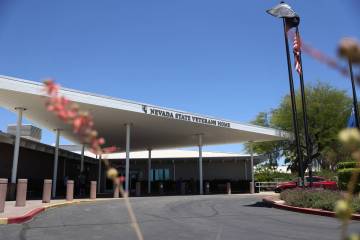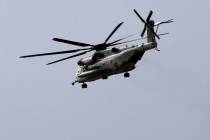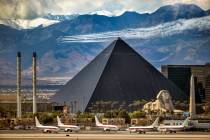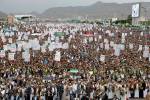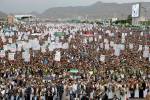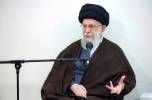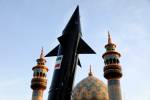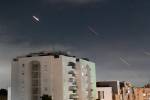Defense secretary has no details about N.Korea military options
WASHINGTON — The U.S. has seen no need to shoot down North Korean missiles test-fired in Japan’s direction, but a future missile launch that threatens U.S. or Japanese territory will “elicit a different response from us,” Defense Secretary Jim Mattis said Monday.
He also said, without elaboration, that the Trump administration has military options against North Korea that would not put Seoul at risk. He would not say whether he was referring to overt combat action, a cyberattack or something more covert.
“I will not go into details,” he said.
Mattis also confirmed that he and his South Korean counterpart had recently discussed the possibility of putting U.S. nuclear weapons back into South Korea, an option that has been raised publicly by some South Korean politicians. U.S. nuclear weapons were withdrawn from the Korean peninsula in the early 1990s at the close of the Cold War.
“We discussed the option, but that’s all … I want to say,” he said.
Mattis discussed several aspects of the North Korea crisis in an impromptu exchange with reporters at the Pentagon, including the effect of international economic sanctions and diplomatic pressure on North Korea. He argued that the pressure is working, and gave as an example Mexico’s decision to expel the North Korean ambassador in Mexico City.
He was asked why the U.S., which has spent tens of billions of dollars on missile defense programs in recent decades, has not tried to intercept North Korea’s rockets as they demonstrate an increasingly sophisticated missile capability.
“No. 1, those missiles are not directly threatening any of us,” he said.
He was referring to an accelerating series of missile tests by North Korea that have defied U.S. and international warnings to stop. North Korea has said the tests are intended to develop the capability to hit U.S. territory with a nuclear weapon. It also has threatened to launch missiles close to the coast of Guam, a U.S. island territory in the Pacific.
On Sept. 3, North Korea conducted an underground nuclear test that was by far its most powerful to date.
Last week, North Korea launched an intermediate-range ballistic missile that traveled 3,700 kilometers (2,300 miles) and passed over the Japanese island of Hokkaido before landing in the northern Pacific. It was the country’s longest-ever test flight of a ballistic missile. Mattis happened to be at U.S. Strategic Command headquarters near Omaha, Nebraska, at the time of the launch and afterward condemned it for forcing “millions of Japanese” to “duck and cover.”
In his remarks Monday, Mattis made clear that the U.S. and Japan are prepared for future missile threats.
The North Koreans “are intentionally doing provocations that seem to press against the envelope for just how far can they push without going over some kind of a line, in their minds, that would make them vulnerable,” he said. “So they aim for the middle of the Pacific Ocean.”
“The bottom line is that the missiles, were they to be a threat” either to the U.S. or Japan, “that would elicit a different response from us.”










